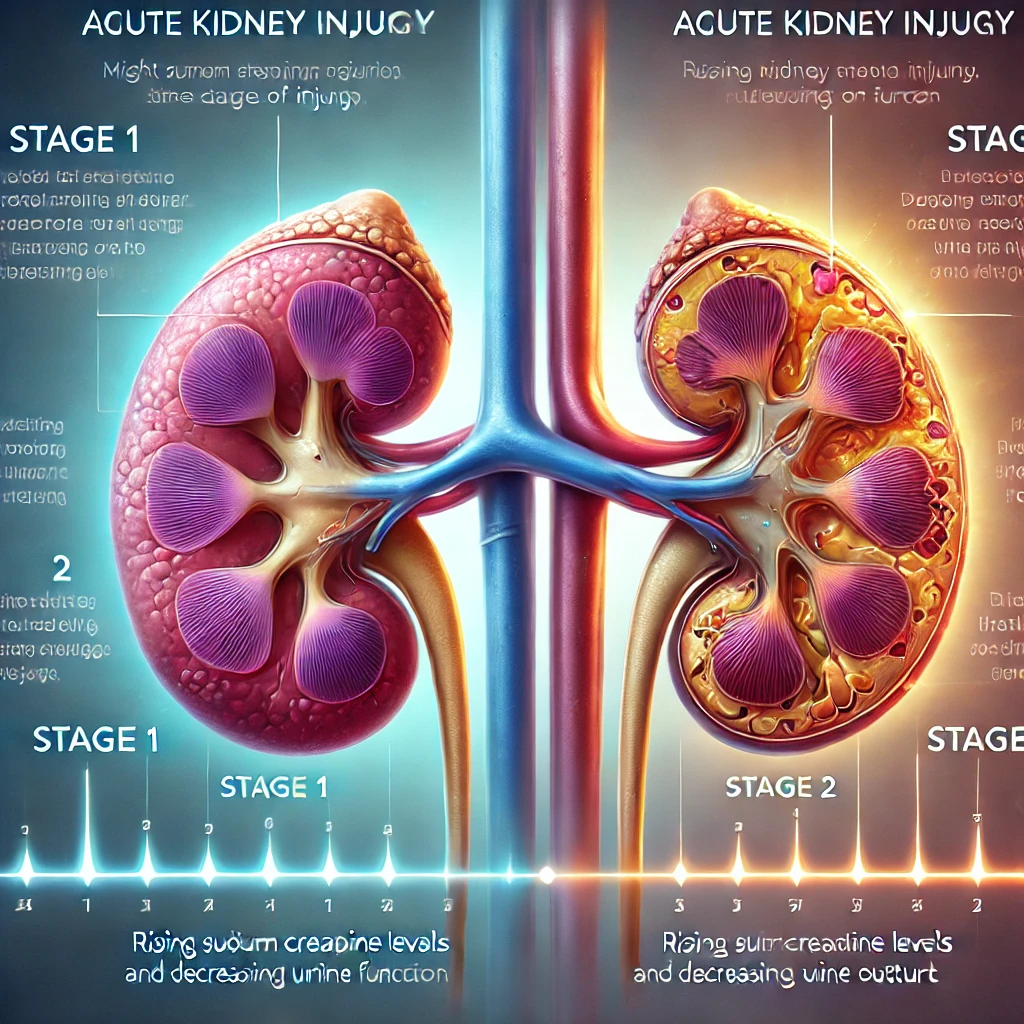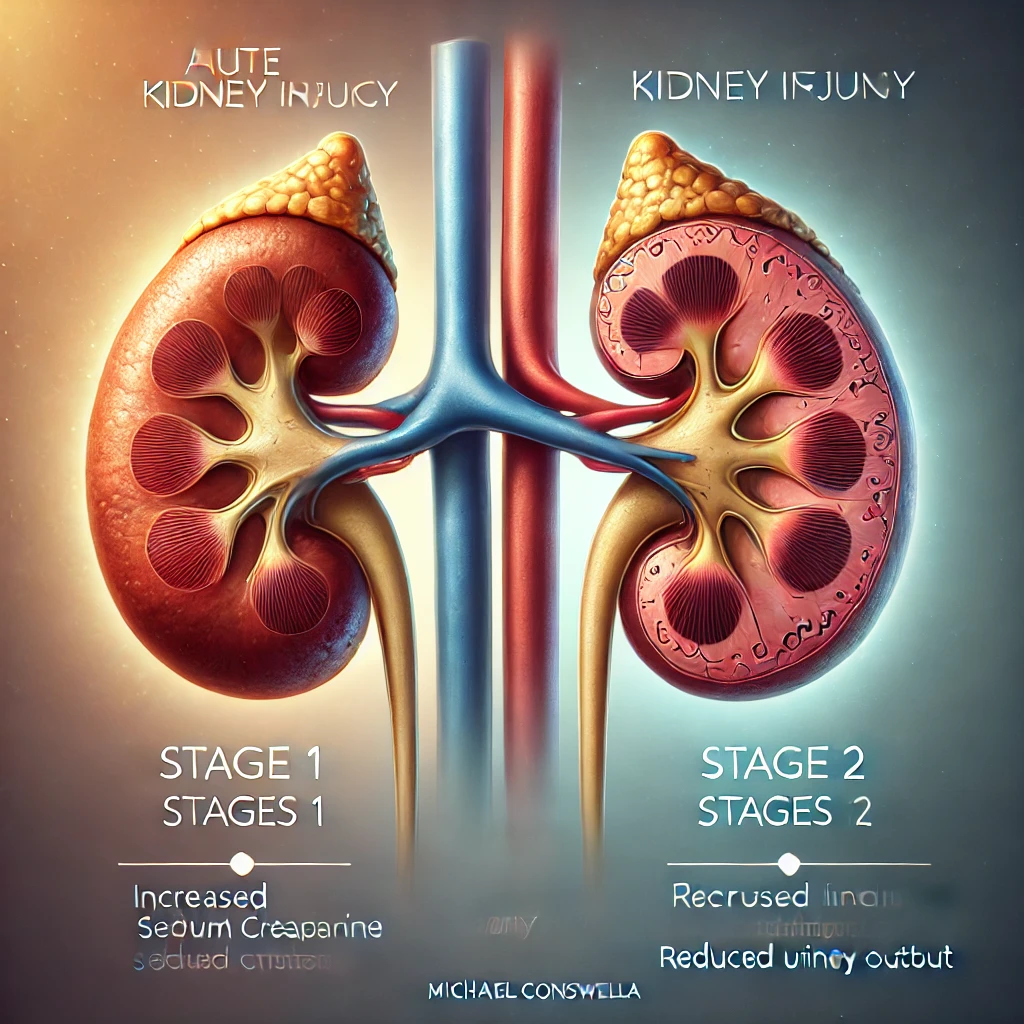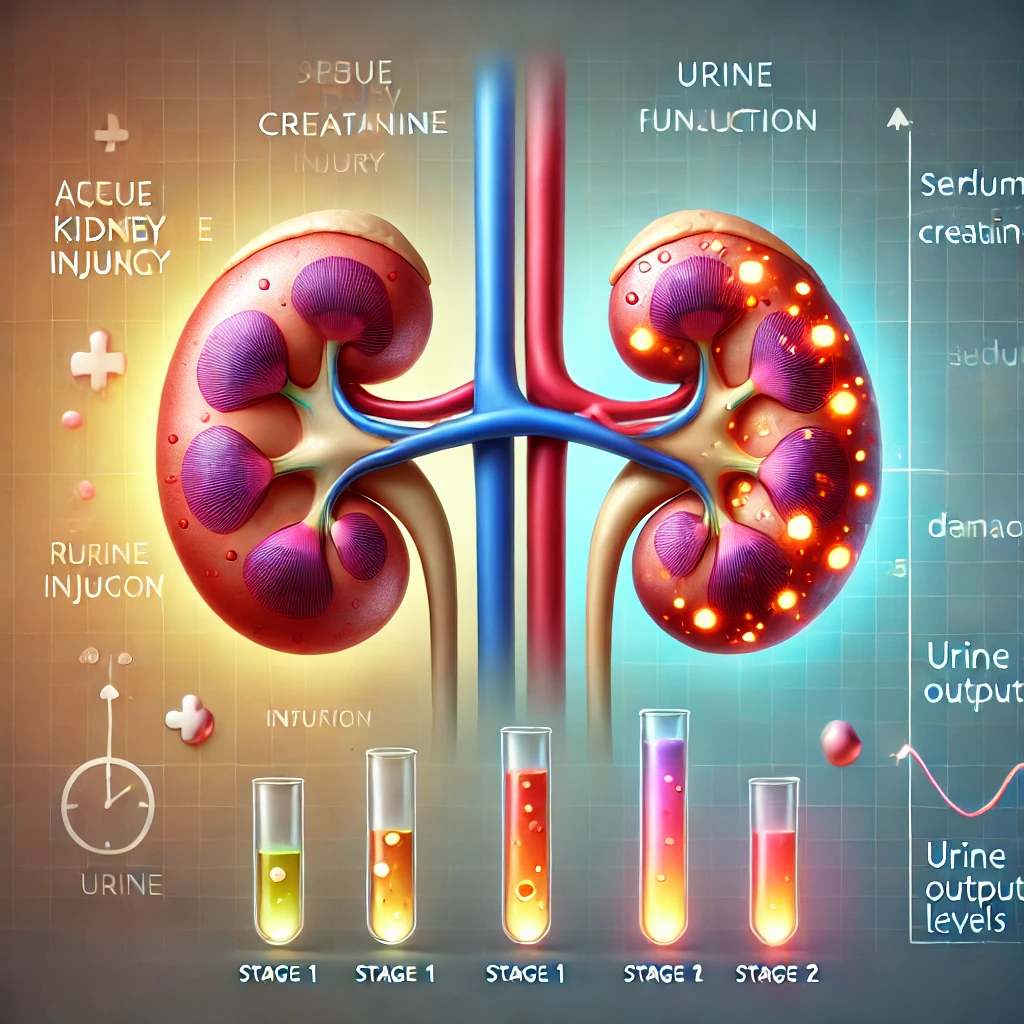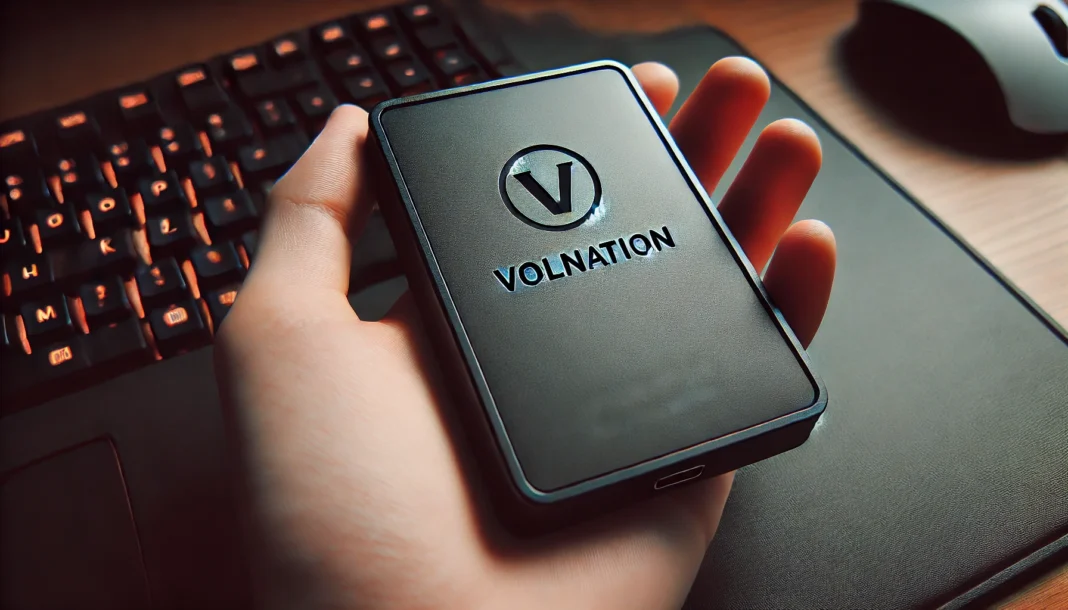When it comes to acute kidney injury between 1 and 2 stage michael conswella, especially between stages 1 and 2, many people like Michael Conswella face serious questions.
What does it really mean for my kidneys?
Is it reversible?
And what can I do to prevent it from getting worse?
These worries are common and valid.
What is acute kidney injury between 1 and 2 stage michael conswella Stage 1 and 2?
acute kidney injury between 1 and 2 stage michael conswella is a sudden drop in kidney function.
This can be due to various reasons like dehydration, infections, or certain medications.
Stage 1 is the mildest form, but it’s still critical to address early.
Michael Conswella’s journey through stage 1 of AKI could have gone unnoticed, as symptoms can be subtle.
It’s the early warning sign, often showing through slight increases in creatinine levels or reduced urine output.
By stage 2, the stakes get higher.
This is when damage progresses, and without intervention, things can get worse.
That’s where people like Michael Conswella need to stay alert and take action.

The Symptoms Michael Faced in Stage 1 and 2
Michael Conswella wasn’t sure what to expect.
For him, symptoms started with feeling unusually tired and noticing less frequent urination.
These are the typical early indicators for many in stage 1.
But as AKI moves from stage 1 to 2, the symptoms can worsen, including:
- Swelling in the legs or feet
- Increased blood pressure
- Shortness of breath
- Nausea and vomiting
Recognizing these signs early can make all the difference.
Michael’s doctor identified these stages by regularly testing his kidney function, which is how most diagnoses occur.
How Did Michael Manage His acute kidney injury between 1 and 2 stage michael conswella?
Treatment for AKI between stage 1 and 2 is all about catching it early and managing the root cause.
In Michael Conswella’s case, it was dehydration and some medications he was on that caused the injury.
Doctors recommend a combination of methods to treat AKI:
- Hydration: This is key. Drinking fluids to stay hydrated can help boost kidney function.
- Medication Review: Michael’s medications were adjusted, particularly those that put extra strain on his kidneys.
- Monitoring Blood Pressure: Since high blood pressure is both a cause and a result of AKI, keeping it in check is vital.
- Rest and a Balanced Diet: To reduce the load on kidneys, Michael followed a kidney-friendly diet, low in sodium and protein.

What Happens If You Ignore Stage 1 and 2 AKI?
Ignoring acute kidney injury between 1 and 2 stage michael conswella can be risky.
Left untreated, it can quickly progress from stage 1 to stage 3 or even lead to permanent kidney damage.
For Michael Conswella, addressing the problem at stages 1 and 2 was a game-changer.
It prevented the condition from escalating.
Many people with acute kidney injury between 1 and 2 stage michael conswella in these stages don’t have symptoms that are easy to spot.
That’s why regular checkups, especially if you’re in a high-risk group (diabetics, older adults, or people with heart disease), are essential.
How is AKI Diagnosed in Stage 1 and 2?
Diagnosis often starts with blood tests and urinalysis.
For Michael, blood tests showed elevated creatinine levels—a clear marker for kidney damage.
Doctors also check for urine output.
Low urine levels, combined with rising creatinine, point towards AKI.
It’s a balance between acting fast and figuring out the cause.
The sooner acute kidney injury between 1 and 2 stage michael conswella, the better the chances for recovery.
Can AKI Between Stage 1 and 2 Be Reversed?
This is the big question.
For many, including Michael Conswella, acute kidney injury between 1 and 2 stage michael conswella can often be reversed if treated early.
But there are some key factors that determine recovery:
- Early Detection: The faster you identify AKI, the more likely you are to recover fully.
- Underlying Cause: If the root cause (like dehydration or medication) can be fixed, the chances of reversal are high.
- Treatment Response: How well your kidneys respond to treatment matters. In Michael’s case, adjusting his medications and staying hydrated helped his kidneys bounce back.
Common Questions About AKI Stages 1 and 2
Can AKI come back after recovery?
Yes, AKI can recur, especially if the original cause isn’t fully addressed. It’s important to stay on top of your health to avoid future episodes.
Is dialysis required for stage 1 or 2?
In most cases, dialysis isn’t needed in these early stages. However, if AKI progresses, dialysis might become necessary in more severe cases.
What lifestyle changes should I make after recovering from AKI?
Staying hydrated, avoiding kidney-harming medications, and keeping blood pressure in check are key lifestyle changes. A healthy diet is also crucial.
How long does recovery from AKI between stages 1 and 2 take?
Recovery time varies depending on the cause and treatment. For some, recovery is quick, while others might take weeks or months.
Final Thoughts on acute kidney injury between 1 and 2 stage michael conswella Between Stage 1 and 2
acute kidney injury between 1 and 2 stage michael conswella between stage 1 and 2, like in the case of Michael Conswella, doesn’t have to mean long-term damage.
With the right intervention, most people can recover.
But catching it early is the secret.
Keep an eye on symptoms, stay hydrated, and regularly check your kidney function if you’re at risk.
Addressing AKI between stage 1 and 2 isn’t about panic; it’s about being proactive.
And that can make all the difference between recovery and further complications.


